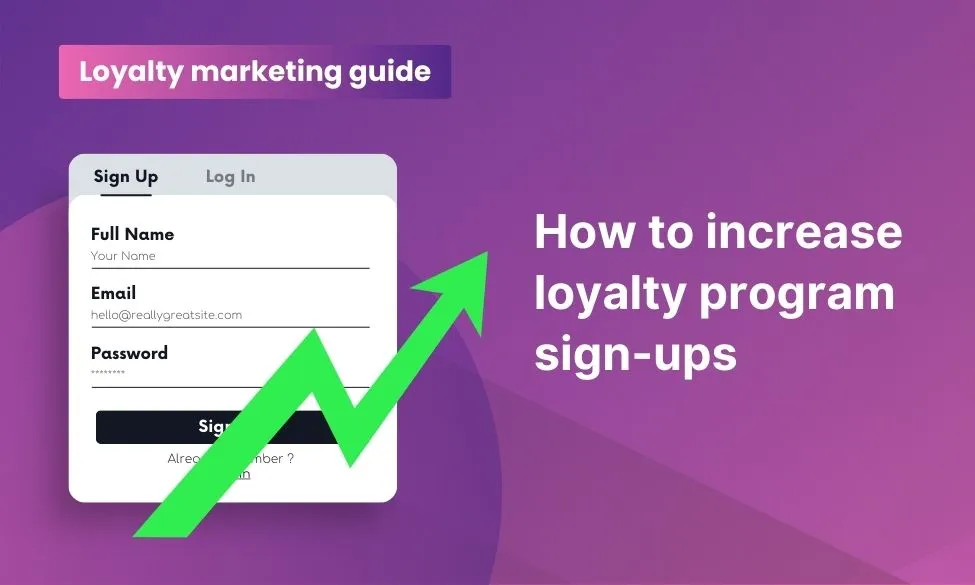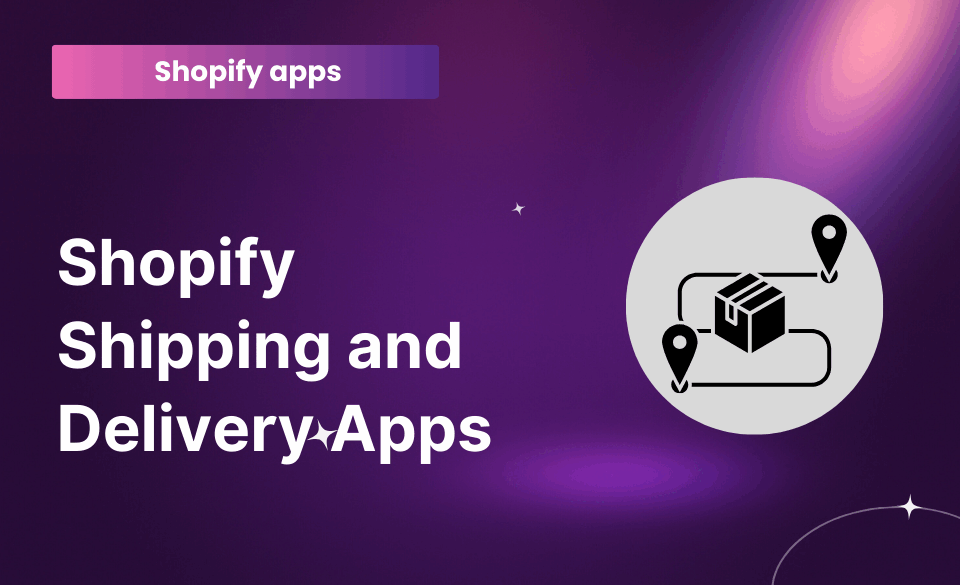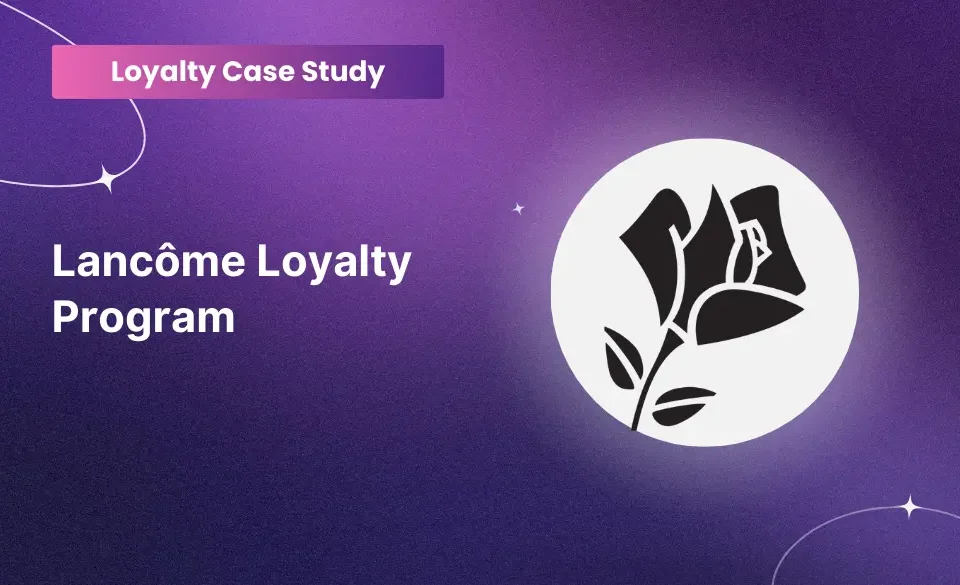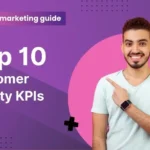
Top 10 Customer Loyalty KPIs Businesses Should Track in 2024
30 May, 2024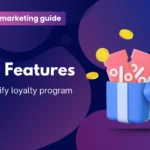
Top 6 Key Shopify Loyalty Program Features for 2024
31 May, 2024Increase loyalty program sign-ups in today’s competitive retail environment. But starting a loyalty program isn’t enough. Getting new users without paying much is difficult.
This article shows 17 proven techniques to boost loyalty program sign-ups without spending more on marketing for seasoned or new e-commerce company owners.
Understanding Customer Motivations
Ever wondered why so many join loyalty programs? No doubt, data shows that six out of ten U.S. customers are mainly attracted by deals. That is why knowing what motivates customer enrollment is critical.
However, incentives are not one-size-fits-all. Many consumers like collecting points for discounts or cash back, while others prefer tiered systems with exclusive benefits at higher levels.
If you know what your target audience likes, you may tailor your program offerings to them and increase the likelihood that they’ll sign up.
17+ Proven Techniques To Increase Customer Enrollment In Loyalty Programs
This section goes deeper into 17+ tried-and-true strategies for converting your loyalty program from a passive participant to an active customer acquisition tool.
From creating appealing rewards to utilizing the power of social media, we’ll look at a wide variety of strategies for drastically increasing your loyalty program sign-up rates.
1. Offer A Compelling Welcome Bonus
As many as 57.4% of customers who join reward programs do so mainly to save money. A welcome reward is the perfect way to attract these customers who are watching their budgets.
To attract budget customers, use these welcome bonus options: Give new members a pre-loaded points balance, a first-purchase discount, or early access.
In what follows, we’ll go further into these fantastic suggestions for welcome bonuses and other methods to create a reward program that consumers who are mindful of their budgets will appreciate.
2. Leverage Multiple Sign-Up Channels
Customers want everything to be easy and quick, especially when signing up for your loyalty program. Facilitated program registration at several touchpoints, lessening barriers and increasing program members.
Here are some key channels to consider:
- In-Store Sign-Up:
For example, customers can sign up for Sephora Beauty Insider at the in-store counter.
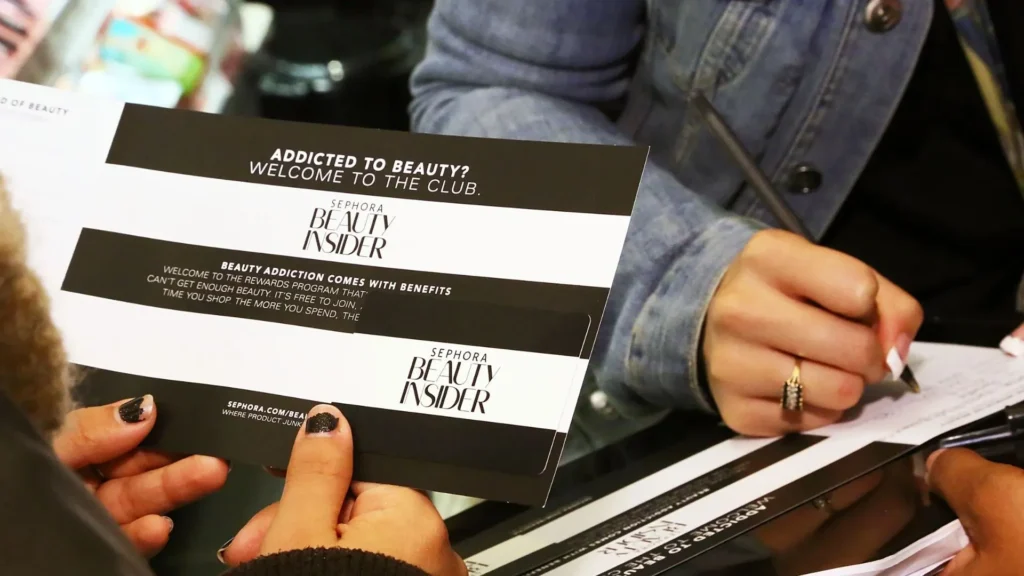
- Website pop-ups and registration forms:
Take Sephora as an example again. Not only can you sign up for their Beauty Insider program at the register in-store, but their website seamlessly integrates program registration forms with sign-up options.
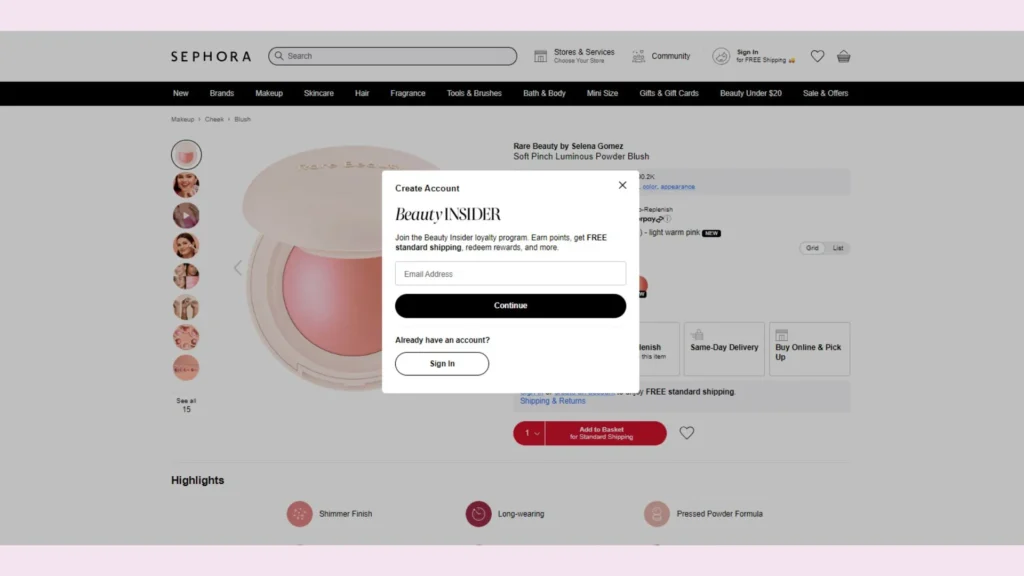
- Mobile App Integration:
Sephora’s mobile app lets members join up and manage rewards from their phones.
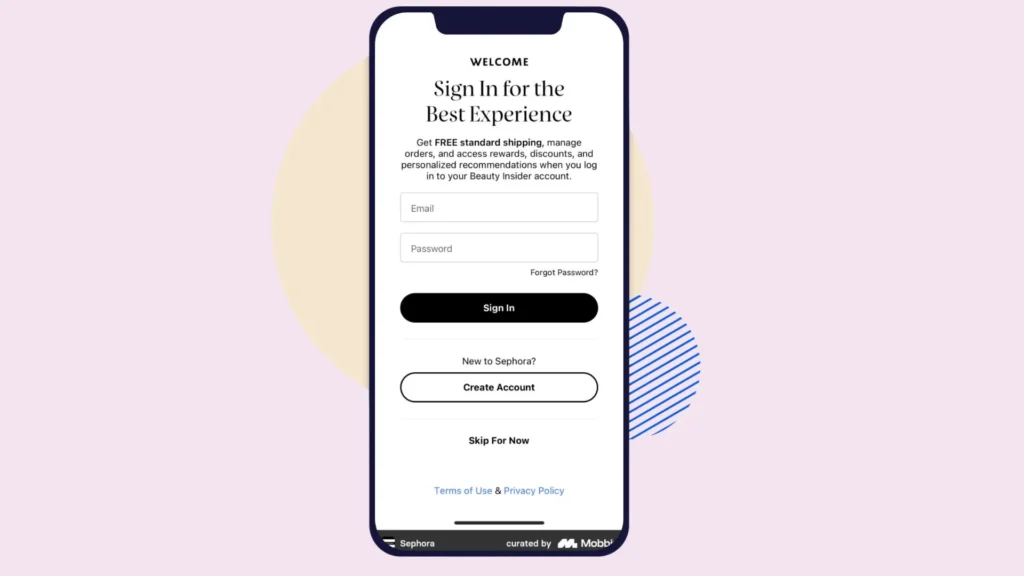
3. Highlight Program Benefits Through Clear Communication
According to surveys, 37% of customers are more likely to join a program that is simple to grasp. Communicating freely and honestly is probably the most effective strategy to get new followers and boost customer engagement.
Here’s how to properly promote your program’s advantages via straightforward communication:
- Simple and engaging language.
- Focus on the value proposition.
The Body Shop’s Love You Club got its idea from its message, which says that users can “Earn points and enjoy exclusive offers and rewards every time you shop online or in-store.“ This simple line tells potential buyers what the program will do for them.
They also offer a “15% off your first purchase“ reward, which is a great way to show how signing will help you immediately.
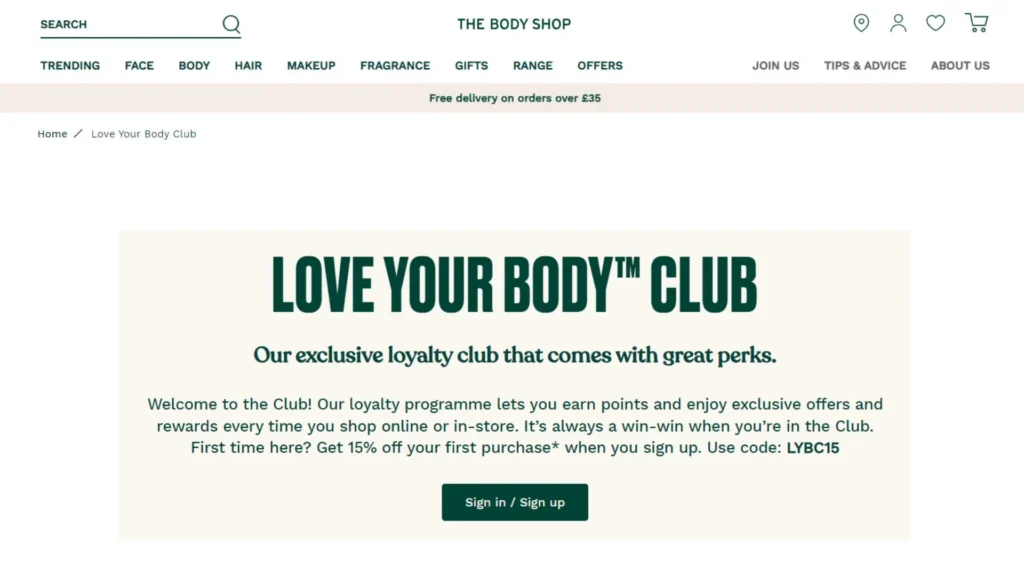
4. Partner With Other Businesses For Cross-Promotions
Partnerize’s study shows that 54% of companies say that working with other companies brings in more than 20% of their total revenue. Cross-promotions campaign allows you to uncover many benefits.
When you work with another brand, you can reach their customers. This lets you introduce your program to a new group of people who might want to join.
Also, cross-promotions boost loyalty program membership and may attract new consumers interested in how the two organizations collaborate.
For instance, the Starbucks Rewards program (a favorite among smartphone-savvy younger demographics) integrates with Spotify.
Members can make mixes to listen to through the Starbucks app while in the coffee shop. Plus, Spotify tells its users about these Starbucks mixes inside the app to reach even more people.
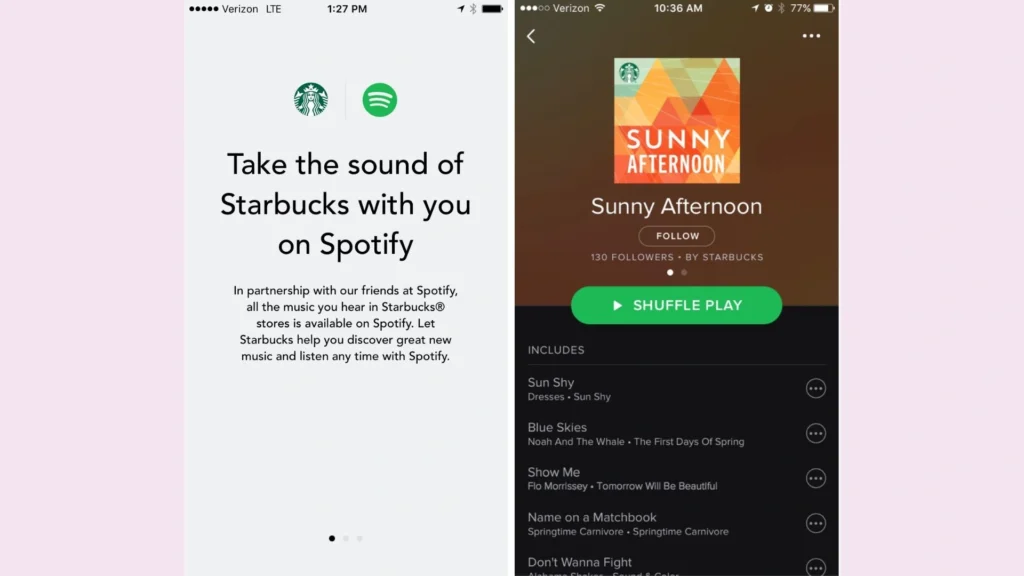
This is a win-win for everyone. Customers get a more personalized coffee experience. Starbucks gets more brand publicity, and Spotify might get more paid users.
5. Utilize Social Media Marketing And Influencer Outreach
Social media is used by 89% of marketers, which makes it the best place to grow your reward program and reach more people.
You could work with social media influencers. For example, they might write authentic content that easily supports your program to interested people.
Nike’s influencer marketing with marathoner Shalane Flanagan as a Nike Coach is a good example. Flanagan motivates runners with her own Instagram training suggestions and inspiration. The Nike Running Club offers unique material for those who want more.
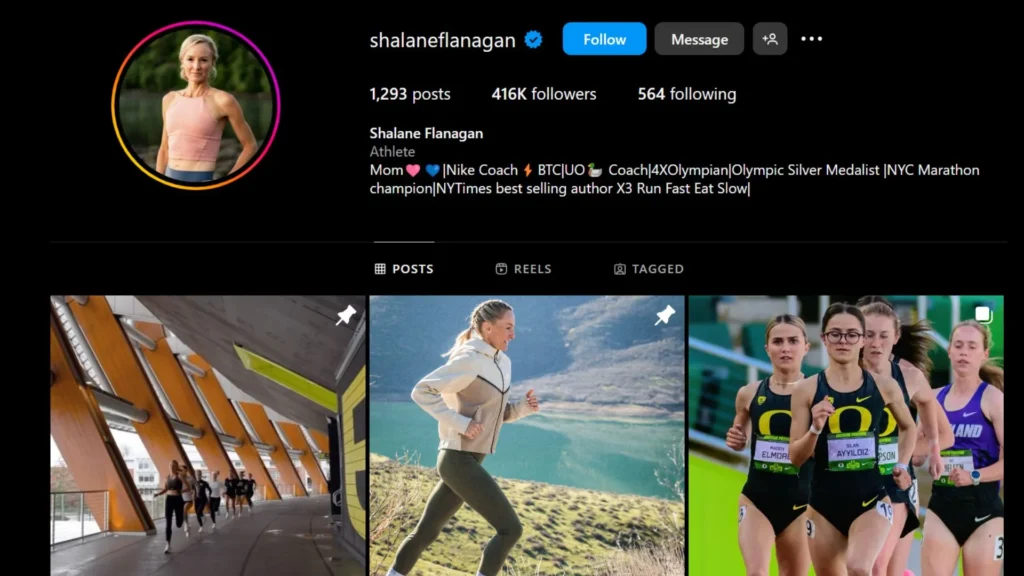
It’s wise to target runners who appreciate Flanagan’s expertise and want to improve by learning from the best.
6. Seamless Sign-Up Process And Frictionless
Remember that more than half of all consumers (53%) prefer simplicity of use about loyalty programs. That’s why plain and uncomplicated programs are essential.
You should minimize registration steps to keep the enrollment process short and easy. Ask for only the essential information needed to identify and track customer rewards (e.g., name, email address). Also, skip the forms with too much information.
One example is the Dunkin’ Rewards, which allows customers to enroll with only basic information like a phone number. You may also register by clicking on your Apple account.
Dunkin’ Rewards registration process.
As a result, customers may begin earning points and have access to exclusive mobile deals.
7. Offer Tiered Rewards Structures
According to the industry benchmark Loyalty Reports, tiered programs have a 1.8x, or 80%, better program ROI (return on investment) than programs that do not provide levels.
Tiered programs help people feel like they are making progress and reaching goals. New members can start at the base level and get perks immediately, like savings on birthdays or buy points.
For example, Sephora Beauty Insider’s tiered program’s low barrier to entry makes the program easy for loyalty program sign-ups and pushes people to do so at the start.
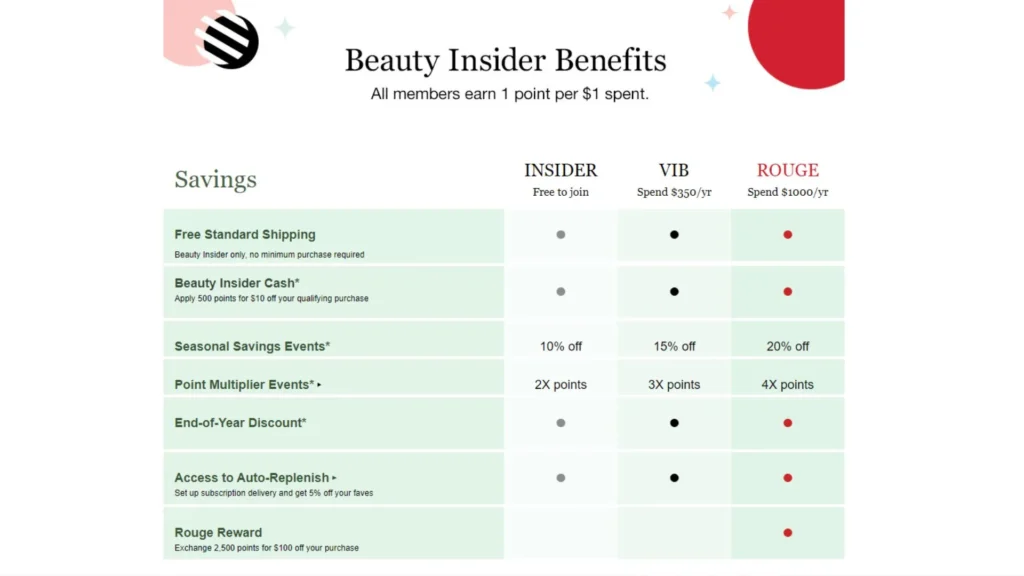
With a tiered program, you can meet all your customers’ wants and levels of involvement. It encourages members to move up the ladder, which increases the program’s worth and customer trust in the long run.
8. Implement Gamification Elements To Drive Engagement
Gamification has become a marketing favorite, with 93% of marketers praising it because it appeals to a primitive sense of fun and competitiveness, which keeps us interested.
Here are a few ideas: Give members points for purchases or reviews. Use progress bars to highlight how close they are to receiving incentives, and make it thrilling by displaying your top performers on public or private leaderboards.
Take Sephora’s Beauty Board, for example. It’s more than a social networking platform; it integrates gamification elements to boost loyalty program sign-ups. They have leaderboards that include top uploaders, reviewers, and content creators.
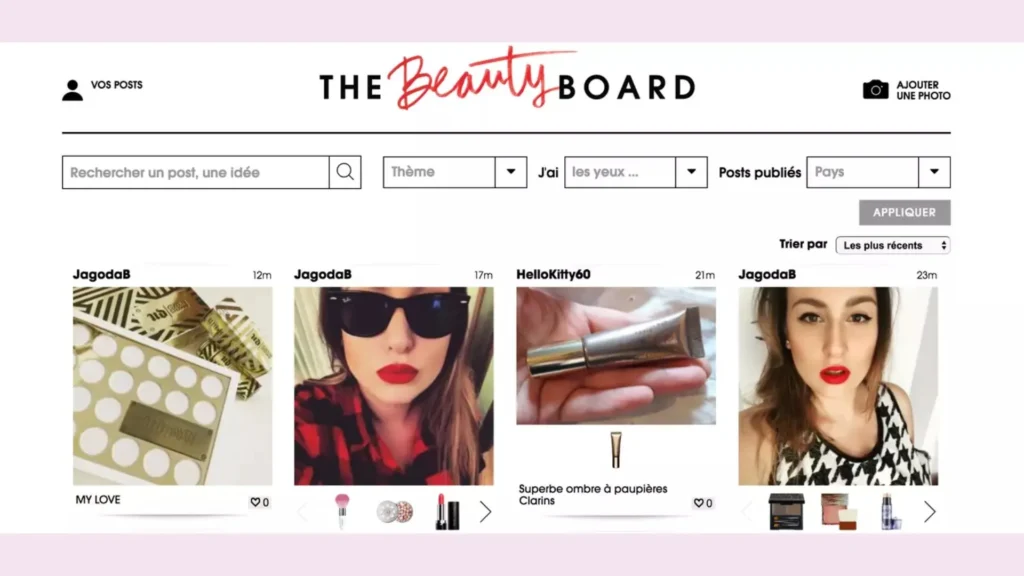
This competition would promote involvement and content creation, raising user interest and sales.
9. Personalize The Customer Experience
Customers want personalized rewards. Research by Epsilon proves it – 80% are more likely to do business with companies that offer them. That’s the power of personalization in driving loyalty program enrollment.
For example, free personalization is one perk that truly sets adiClub Rewards apart. There is no extra cost to add names, numbers, flags, and other things to your favorite Adidas gear before you buy it.
Adidas fans like this one-of-a-kind offer, which makes them want to join the program for this special experience.
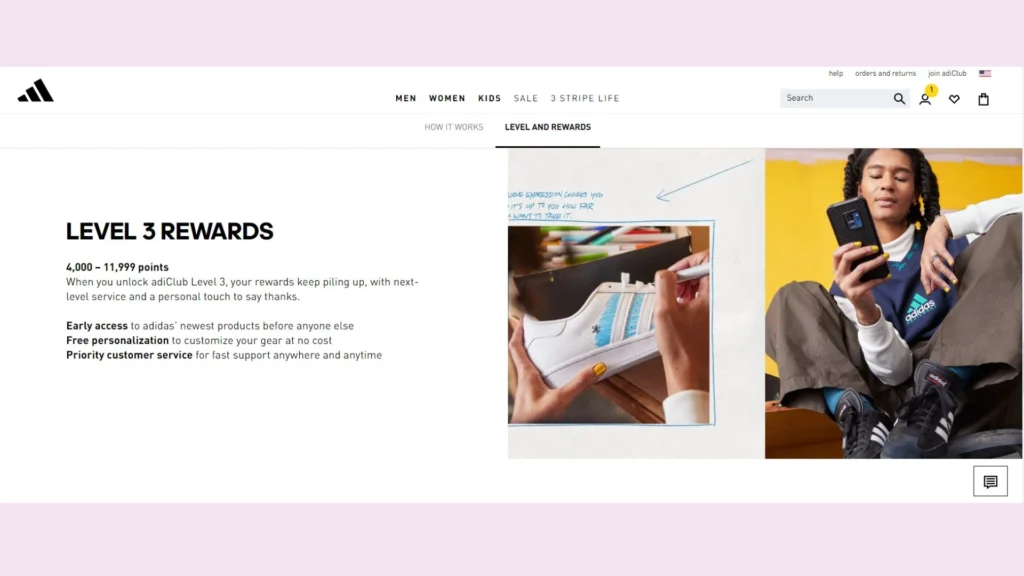
10. Offer Double Points Or Bonus Rewards For A Limited Time
Limited-time marketing capitalizes on the fear of missing out (FOMO). Highlighting the limited time to gain double points or extra bonuses adds pressure. Customers seek for these specific benefits. So, they join your loyalty program and take advantage of the exclusive offer before it expires.
An example would be Guzman Y Gomez, a Mexican Kitchen. They are running a promotion whereby guests may double GOMEX points every Monday in February 2024.
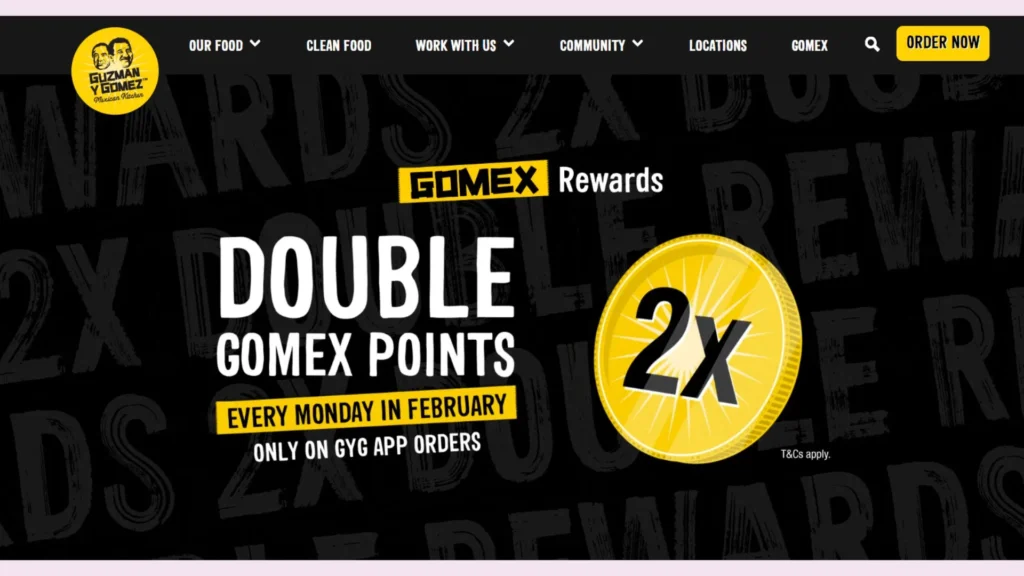
This is a great example of how FOMO can boost sign-ups and earn double points by waiting.
11. Reward Birthday Celebrations And Special Occasions
A customer’s total value is 306% higher if they feel emotionally connected to the business, according to research. As this shows, building connections that go beyond business is very important.
Offer savings on their birthday or gifts on the anniversary of their program as a small way to show that you care about them as people.
One example is Buffalo Wild Wings’ Blazin’ Rewards program. They celebrate members’ birthdays by giving they a complimentary six-piece wing token. Wing fans are clearly their target audience since they offer birthday wings as an incentive to join the program.
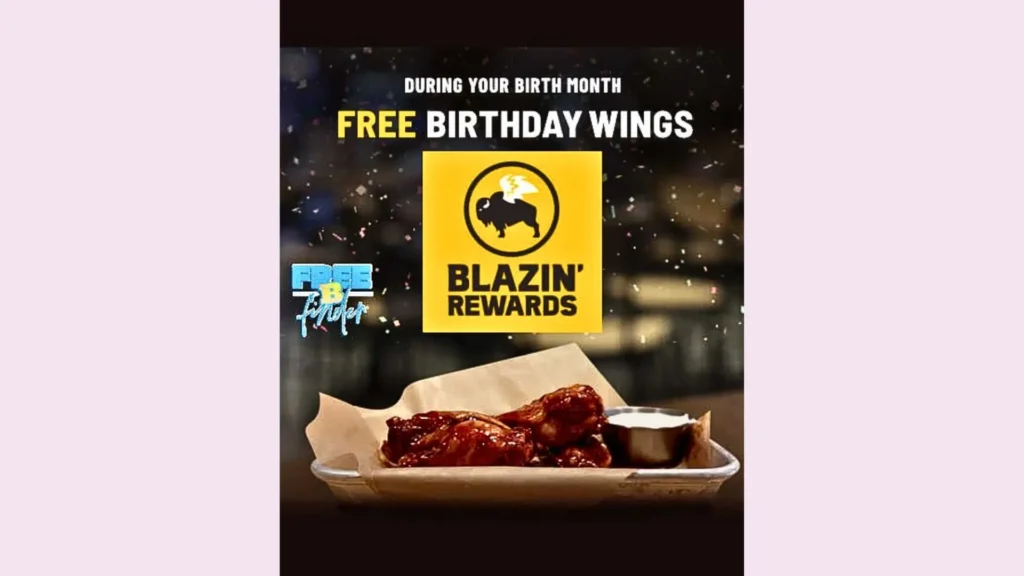
The customer gets something free on their birthday, and Buffalo Wild Wings might get a new, loyal customer.
12. Emphasize The Convenience Of The Program
Forget about reward cards that were big and freebies that you had to dig through. Today’s customers want things to be easy, and your reward program gives them just that.
It’s easy to sign up—all it takes is a few clicks in the app or a quick word when the customer checks out their first buy. Also, no more lost cards. Customer wants to track their points online with a phone number or app.
Take Starbucks Rewards as an example; enrolling is quick and easy via the app or even after checkout. No card needed—member purchases earn points on their mobile app.
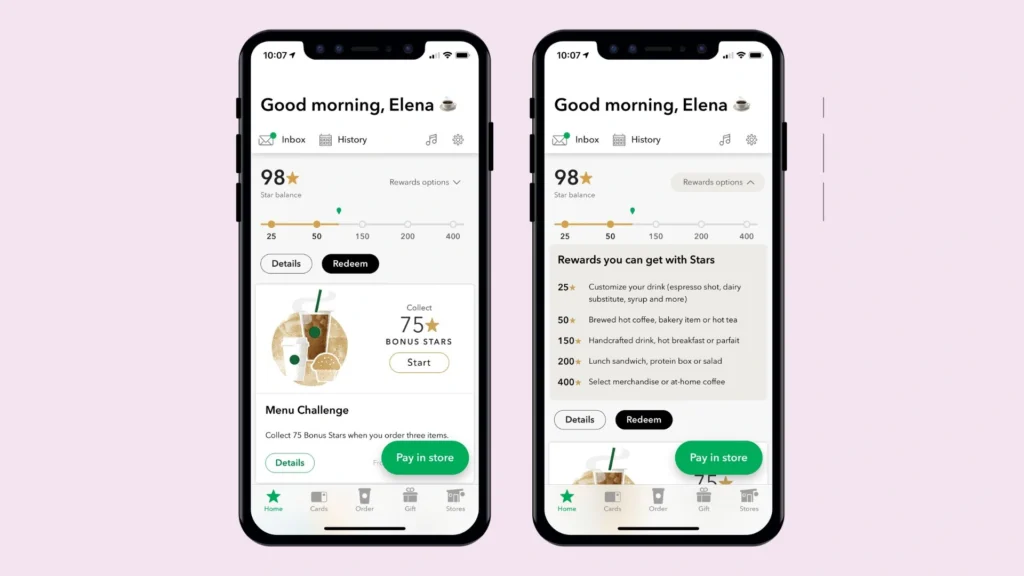
This program’s straightforward registration and point-tracking processes make signing up and making the most of it an easy choice.
13. Showcase Customer Testimonials And Program Success Stories
The truth is that customers trust other customers. No doubt, real stories from other people are the most trusted material for 97% of online buyers. That’s why social proof (customer testimonials) and program success stories are gold for boosting loyalty program sign-ups.
Testimonials can answer common worries that might keep people from becoming members.
For instance, a customer raving about how easy it is to redeem rewards can make people more likely to sign up. Hearing about good experiences from real people makes them more likely to trust and believe in your program.
Take Patagonia’s “Worn to Wear Stories” page as an example. This is a master lesson in customer testimonials. It promotes Patagonia’s ethos, purpose, and brand image while showing customers’ affection for the brand and the durability of its apparel.
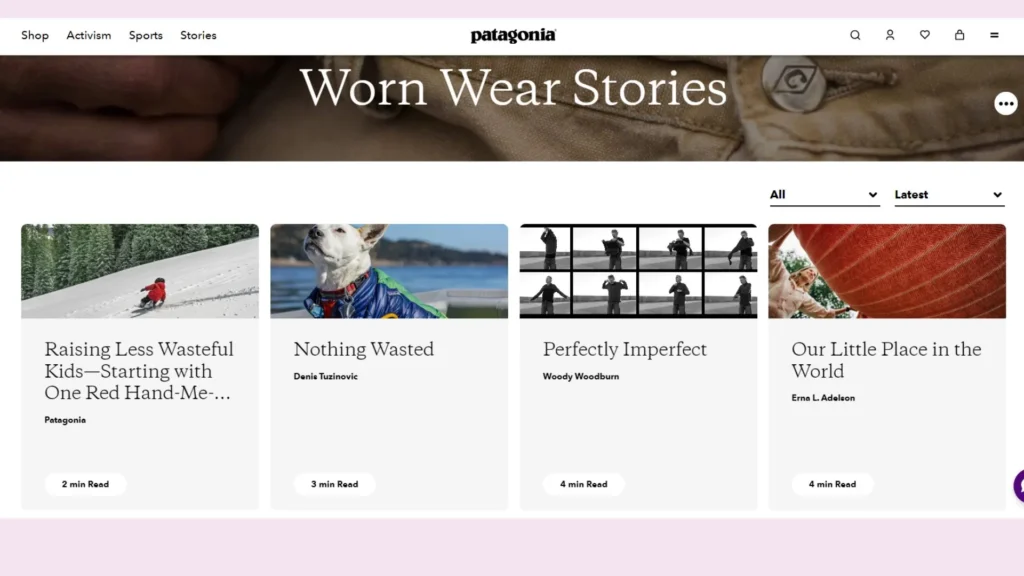
14. Run Loyalty Program Contests And Giveaways
People are naturally motivated by the chance to win something valuable. Contests and giveaways tap into this inherent desire, creating a buzz around your program and attracting new customers eager to participate.
Here are some engaging ideas:
- Social Media Contests:
Users can enter contests by following your brand and sharing a post with a certain hashtag. This boosts knowledge of the business and gets people to sign up for the program by pushing them to interact on social media.
- Sweepstakes:
Use a giveaway offer, unique items, trips, or gift cards. A simple but effective way to get people excited and bring in new users who want to try their luck is to hold a sweepstakes.
As an example, the Uitkyk Centre’s retailers collaborated with Uitkyk Vleis en Supermark to provide a Mother’s Day 2024 giveaway. The lucky customer would receive an R500 gift certificate for every bottle of wine bought with their loyalty card.
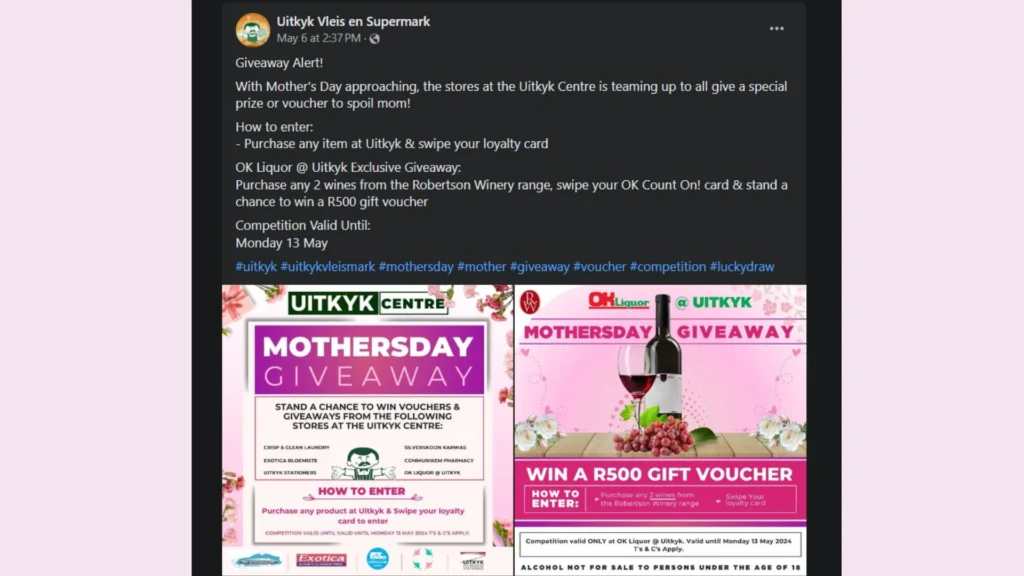
15. Utilize Targeted Email Marketing Campaigns
To segment your email list, divide the customers into smaller groups based on certain criteria such as buy history or hobbies. Targeted email strategies are 14.32% more likely to be opened than generic blasts. Because they appeal to your consumers on a personal level.
You can segment your email based on customer buy history.
For first-timers, highlight program enrollment convenience and attractive welcome benefits. When customers feel valued, they are more likely to do something, like join the program or use its benefits.
For instance, M.A.C. Cosmetics might divide their email list into groups based on their purchase experience.
Their emails promote the “Birthday Gift From M∙A∙C” incentive for joining the M∙A∙C Lover program. This tailored strategy encourages loyal consumers to upgrade and access special incentives.
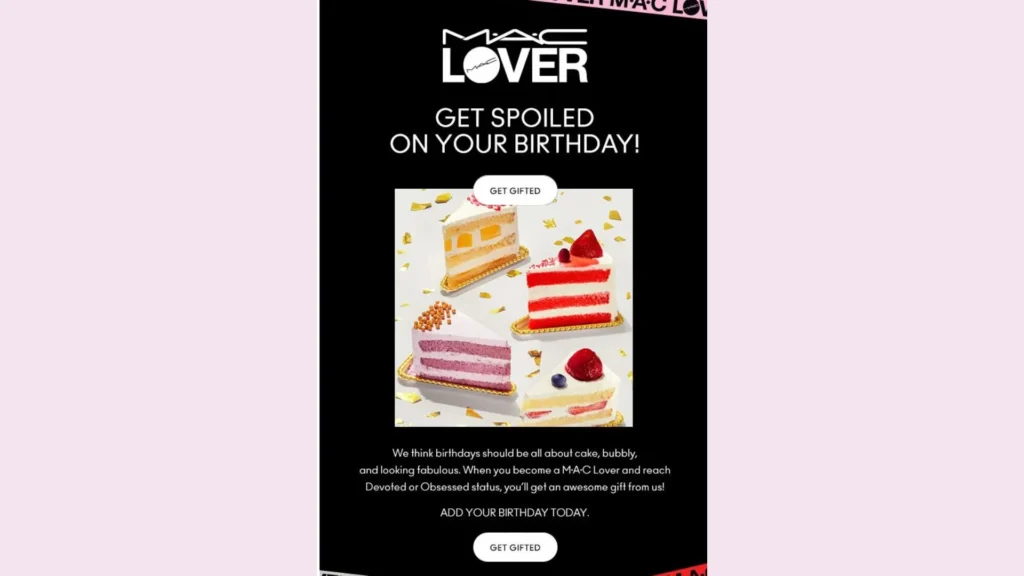
16. Offer Referral Bonuses For Customer Recommendations
Nielsen found that 92% of people trust recommendations from friends and family more than ads. Referral programs exploit this natural tendency to turn happy customers into brand supporters.
The foundation of a successful referral program lies in its rewards. Ensure the referrer (current customer) and referee (new customer) get good benefits.
Jack Threads is one example. Customers get a $10 deal for every excellent friend they get, and the friend gets a $10 bonus.
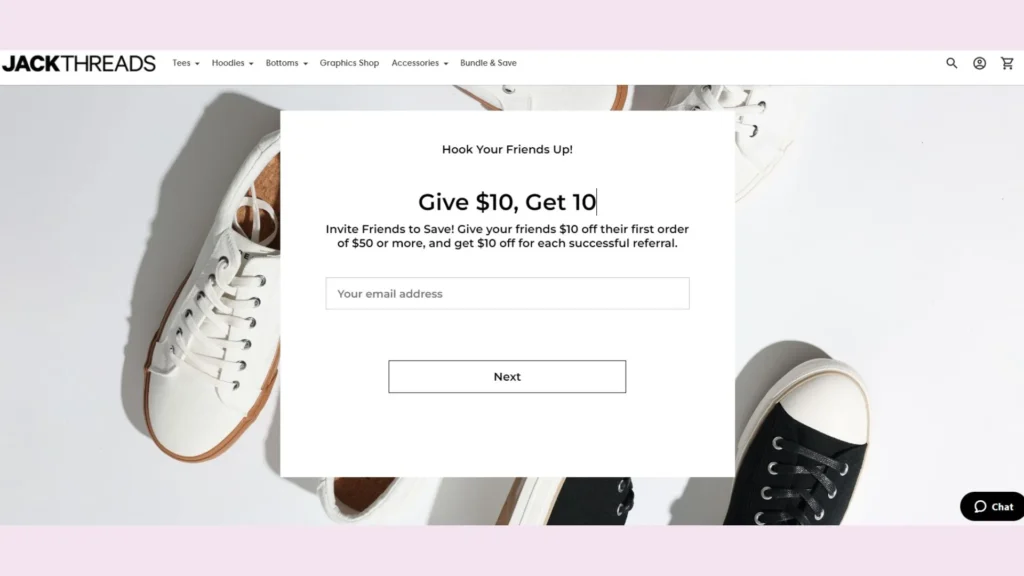
You can create a leaderboard highlighting members with the most successful referrals. This gamifies the program and incentivizes friendly competition, encouraging loyalty program sign-ups.
17. Integrate Loyalty Program Benefits Into Your Overall Marketing Strategy
Suppose a consumer hits your website, sees a social media post, and enters your shop. By pushing it across all your marketing channels, you can make your reward program more valuable and give your customers a better experience.
Here’s how to integrate your loyalty program benefits into various marketing channels:
- Homepage Banner: Make the program stand out on your site and make it easy for people to sign up.
- Dedicated Program Page: Create a page outlining program benefits, tiers, and reward structures.
- Product Pages: Highlight how product purchases translate into points or rewards earned.
For instance, Hilton Honors has a program page on its website that explains the various levels, perks, and ways to redeem points. On hotel booking sites, you can see how many points you may earn depending on the room type and duration of your stay.
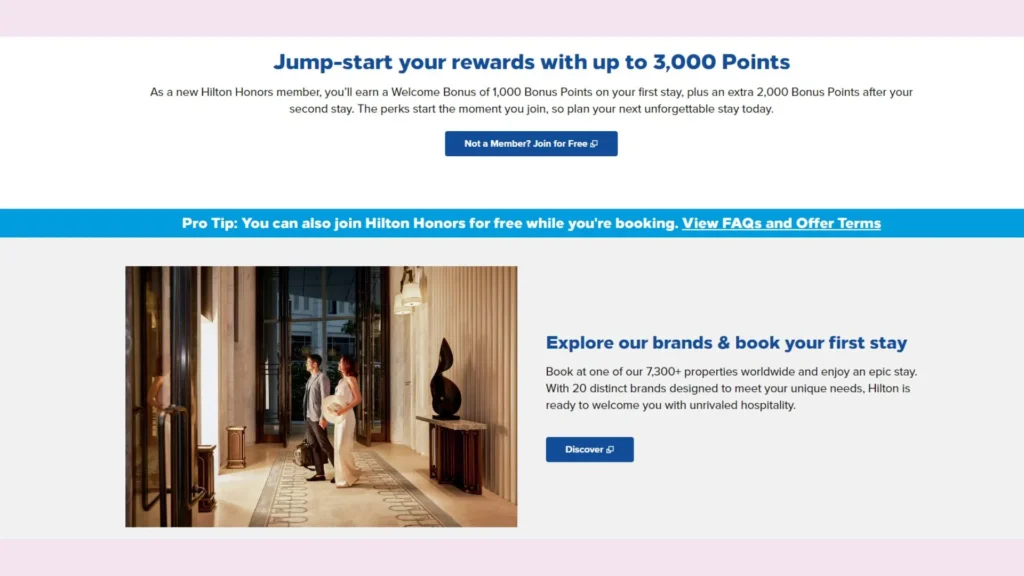
In-Store Signage:
- Signage & Displays: Use clear graphics and short text to ensure the program is easy to find throughout your store.
- Point of Sale (POS) Integration: Show information about the program and points won at the register to make it stand out as important.
- Staff Training: Train your staff about the basics of the program so that they can answer questions from customers and get them to sign up.
Recall that loyalty program banner design and placement vary by company and audience. The aim is to create a visually appealing and informative item for the website that attracts clients and encourages them to join the program.
Conclusion
Boost loyalty program sign-ups take time. As shown, there are several choices, such as improving prizes or leveraging social media. Remember to determine your target audience and tailor your presentation to their needs.
Are you prepared to put these strategies into action? Look no further than BON Loyalty for Shopify. With our comprehensive loyalty program solution, you get all the features listed in this blog post and more.
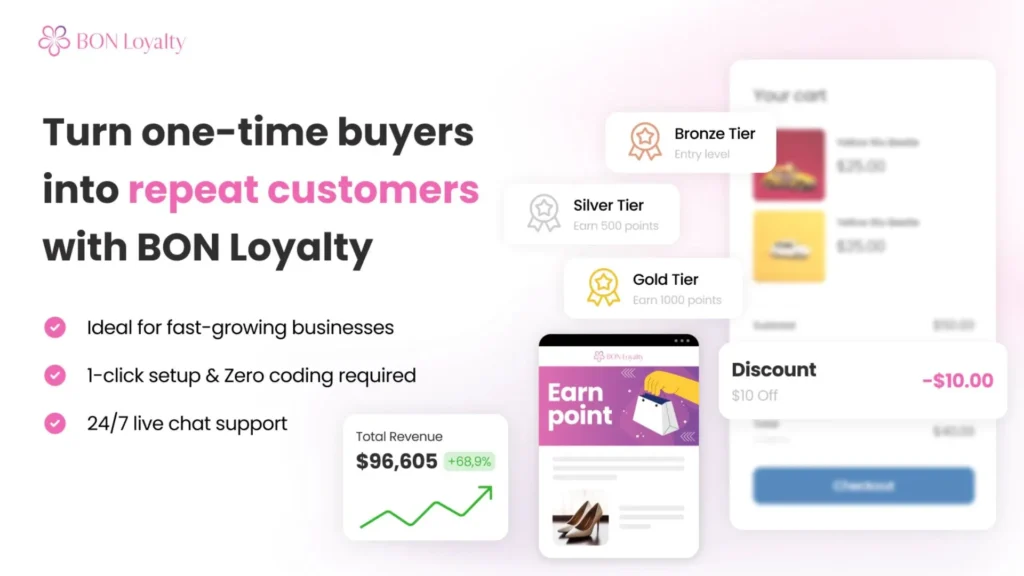
Visit BON Loyalty to learn more and start your loyalty program success story.
FAQs
1. How often should I offer welcome bonuses?
When it comes to the frequency with which you should provide welcome incentives via your loyalty program, there is no universally applicable approach. The following aspects should be taken into account while making this decision:
- Program objectives.
- Budget and Customer Lifetime Value (CLTV).
Finally, recording and evaluating your program statistics is the most effective technique to decide how often welcome bonuses should be distributed.
2. What metrics should I track to measure program success?
To assess your loyalty program’s influence on your company, check essential KPIs. The following metrics are important across categories:
- Program enrollment rate.
- Repeat purchase rate.
- Average order value (AOV).
- Redemption rate.
- Churn reduction strategies.
By keeping an eye on these measures, you can learn a lot about how well your program is working.
3. How can I personalize the program to encourage sign-ups?
Here are some ways to customize your loyalty program and promote sign-ups:
- Customize welcome incentives.
- Tiered Rewards: Advanced beauty and tech enthusiasts may get early access to new cosmetics and pre-orders.
- Customized Advice: Provide member-friendly benefits based on purchases and browsing.
Making your loyalty program more engaging by tailoring it to each consumer and offering individual incentives will motivate them to join up and return.
4. What are some effective ways to promote the program and reach new customers?
Here are some effective ways to promote your loyalty program and reach new customers:
- Promote programs via several channels.
- Utilise influencer connections, social media, and targeted email campaigns.
- Make program advantages part of your marketing approach (website, in-store signage, email signatures).
Keep in mind that advertising your reward program is an ongoing process.
5. Should I offer tiered rewards structures to attract new loyalty members?
Yes, you should; tiered incentive schemes may be quite intriguing and promote program participation. By providing larger incentives that require more work, you may encourage customers to engage more actively and reach higher levels.
Both new and long-term members may benefit from a well-thought-out tiered rewards scheme.
Lindsey Nguyen is a Content Marketing Specialist at BON Loyalty, specializing in digital marketing and eCommerce. At BON Loyalty, she crafts content that empowers Shopify store owners to build and sustain thriving customer relationships through innovative loyalty programs. Her articles, often featured on the BON Loyalty blog, provide valuable strategies and insights that help businesses enhance customer loyalty and increase customer lifetime value.
